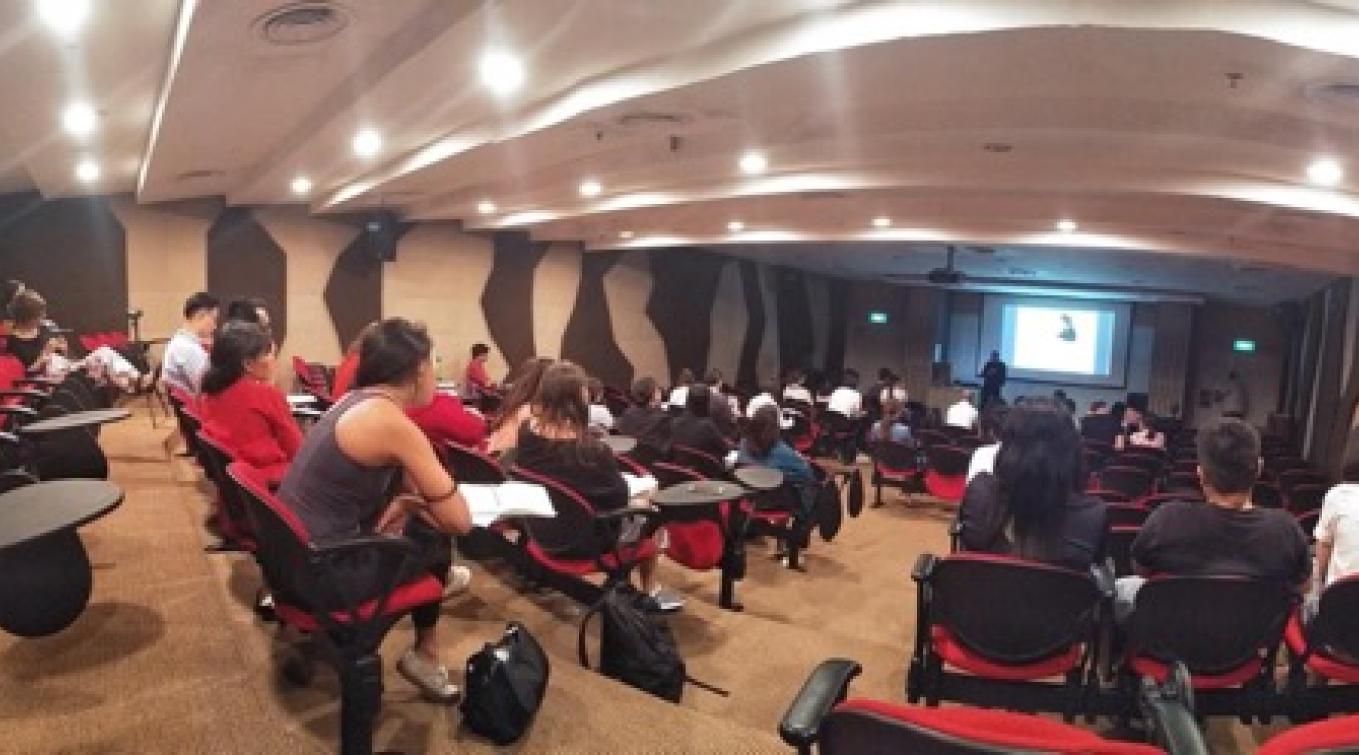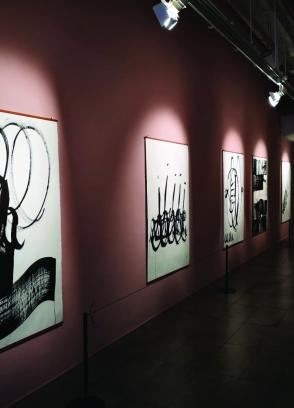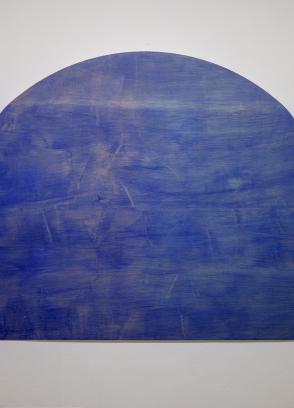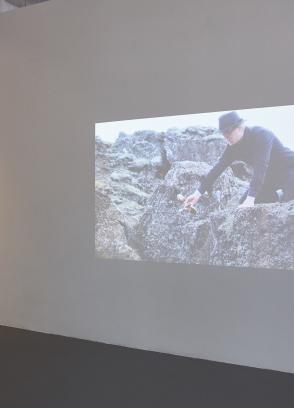Images courtesy of Cynthia Wang Huiyuan
by Cynthia Wang Huiyuan, BA(Hons) Fine Arts Level 2 (2019)
“In today’s world, there is always so much competitiveness, not to mention negativity and malignance in all sorts of environments. Perhaps it is time we realise that we are not living to compete in the rat race, but rather to find peace and satisfaction in a world full of chaos.”
In his talk in our humble lecture theatre at LASALLE, David Trevelyan, artist in residence for MA Art Therapy, openly shared with us his personal life story, his past as a young boy with dyslexia and ADHD (Attention Deficit Hyperactivity Disorder). His struggle to perform in school was translated into an addiction to drawing, where he sought solace in a world defined and governed by himself.
David, who is from Canada, had travelled to Southeast Asia in the 1990s to spend some years in Bali where he set up a sculpture studio where he sculpts and manipulates forms increasingly over the years with the digital medium. He is inspired by the “cyber-heuristic/psychic automism learning experience between the arts, lifestyle and technology”.
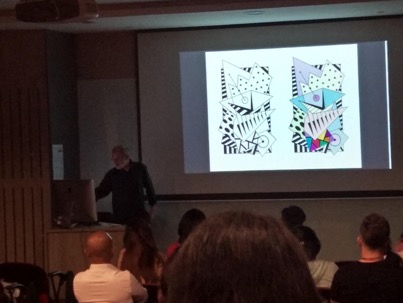 David Trevelyan sharing his illustrations.
David Trevelyan sharing his illustrations.
Dharma Taksu Yoga and Wabi-sabi
David shared the practices of Dharma Taksu Yoga and Wabi-sabi. Dharma Taksu Yoga is an aspect of our experience that helps to 'hold, maintain, keep' our momentum going and helps us transfer our ‘energy’ from one realm to another, and in David’s case, transform his learning disabilities into a passion for the arts. It is a refreshing concept, especially since repetitive, rhythmic actions such as connecting dots, colouring within the lines, weaving, etc. exploits its therapeutic powers. The emphasis on such actions lies in its ability to teach sustenance and endurance. This mindset of the Balinese is a stark contrast to Western culture, where repetition is menial, tedious, laborious, and hence considered boring and should be avoided.
Another motivating factor is its alignment with the Japanese world-view Wabi-sabi, which celebrates a kind of beauty that is 'imperfect, impermanent, incomplete'. Indeed, much of the meditative acts David shared – such as carving masks, weaving banana leaves and batik – focus on the process of building endurance and mental stamina rather than any kind of marketable end result.
Psychic automatism
Sharing media theorist Marshal McLuhan’s point of view, David said, “The internet has become an extension of the human nervous system.” The advent of technological devices has made us shift our focus to handheld devices, seek constant distraction from the task at hand and divert our attention towards more exciting news and entertainment. He believed that this led to a global ADD (Attention Deficit Disorder) in the age of information, and proposed that we ought to be more mindful. Despite this, he claims that there is no inherent need for technology to be negative. Electronic stimulus to the limbic region in the brain can help to pacify the hysterical and aid in sleep hypnosis.
And how more to be mindful than to unlock our own subconscious, and listen to the quiet thoughts. There are three ways to go about it, such as Mantra, or verbal communication, Yantra, or written language and systems such as geometry and Tantra or physical motion. He suggested that we do mindless drawing to turn our attention inwards, to trust our instincts and hence be more mindful of what we are doing in the present. He suggested three drawing methods to help the process, namely freestyle drawing, connect-the-dots, and filling in colours.
Beauty in geometry
Apart from advocating the meditative benefits of repetitive work, David is himself interested in crop circles, TV test images, and drawing and colouring his own geometric patterns. There is beauty in the calming effects of looking at symmetrical images, which is something apart from the obsessive pursuit of perfection in the hectic contemporary environment.
In concluding, I believe that there is much to learn from David’s can-do attitude and open-minded acceptance of mistakes and flaws. His talk was highly informative and potentially extremely beneficial when applied to art therapy and art education, particularly to young students with impressionable minds. I look forward to similar talks in the future and hope to see more people believing in his philosophy. In today’s world, there is always so much competitiveness, not to mention negativity and malignance in all sorts of environments. Perhaps it is time we realise that we are not living to compete in the rat race, but rather to find peace and satisfaction in a world full of chaos.

